A Bit About Birds and Berries.
We think of berries as providing a great source of food for birds, and they do. But the plants benefit as much from the birds as the other way around.
As the RSPB explains, some plants coat their seeds in juicy pith - berries, specifically to attract birds and animals.
Berries are usually red or black, so they can be easily spotted by the birds. Red berries generally appear against green leaves, black berries stand out better against autumn leaves and bare stems.
The birds eat the berries, seeds and all, but whilst the flesh of the berries is digested and gives the bird vital nutrition, the seeds usually pass straight through.
This allows the plant to spread its seed far and wide - as the seed will often leave the bird miles from where it originally ate it. There's a reason why bushes and shrubs seem to seed themselves near fence posts and other bird perching places. And that reason is bird poop.
The seeds of some plants like juniper actually need to pass through a bird before they can germinate. The chemicals in the bird's digestive system strip away a coating from the seed which would otherwise keep it dormant.
Now we've had the science bit, let's get on with some recommendations.
Best Shrubs with Berries for UK Birds
1. Berberis

This plant is my personal nemesis. It's gorgeous and covered in red berries that the birds go mad for. It's also covered in very spiky little leaves that go straight through gardening gloves whether they are on the bush or on the ground.
But, the blackbirds love it, so who am I to complain?
The fruit is produced from late summer to autumn. It's a medium-sized shrub and can be shaped into a standard by removing lower branches.
2. Blackthorn

As the name suggests, we're still amongst the prickly stuff here!
The Blackthorne is an indigenous British shrub, so great for wildlife generally. In the garden, it is best used as a hedging shrub.
The blue/black berries known as sloes are loved by the larger birds: mistle thrush and hawfinch for example.
And of course, any leftover can go to make your Christmas sloe gin.
3. Crab Apple

Traditionally the crab apple is a small tree, but now it can be bought in shrub form and even grown in containers.
It will be covered in beautiful pink and white blossom in spring, then stunning little fruits, turning from green to bright red in autumn. Blackbirds and starlings love crab apples, and if they fall to the ground, even the hedgehogs will have a go.
And if the birds leave any for you, you can make them into a gorgeous, bright pink crab apple brandy.
4. Cotoneaster

Cotoneaster comes in a range of shapes and sizes from tall, tree-like bushes to low growing varieties that are good for keeping the weeds down.
In summer it has cup-shaped flowers that are great for attracting pollinators. These are followed by red autumn berries which will quickly be stripped from the bush by waxwings, thrushes and blackbirds
5. Dogwood - Cornus

This is an excellent shrub for the winter garden. Its flame-coloured stems give structure and a real burst of colour when everything else is looking drab and brown.
The berries are black and appear in late autumn. They are loved by finches and thrushes.
6. Hawthorne

The Hawthorn is another native plant ideal for hedging. Tough and hardy they will survive most garden environments.
They are covered in lovely pink blossom in late spring - full of nectar and great for pollinators.
Then in autumn the red berries or "haws" loved by waxwings and blackbirds appear
7. Holly

You may think the birds don't much care for holly berries, as they are often left on the bush whilst the birds feast on other plants.
But birds are smart. Unlike some other berries, holly berries will stay fresh and juicy on the bush right into late winter. So whilst you might have thought that the birds took the holly berries last because they preferred the other fruit. Actually, they are just paying attention to the "best before" date!
If you choose to plant holly, bear in mind that only female plants produce berries and you will need a male nearby to make them fruit.
8. Pyracantha

The pyracantha or firethorn has lots to offer the birds. Evergreen, it provides plenty of cover for smaller birds and the red or yellow berries that cover the bush through winter are loved by sparrows, starlings and finches.
With its glossy, evergreen leaves and bright berries, pyracantha is a welcome addition to any garden in the winter.
9. Roses

If you allow some of your rose flowers to die on the plant, rather than deadheading, rose hips will form. These are actually berries.
Birds will pass by the hips of many types of rose, but there are a couple of species that the birds will love.
Rosa Glauca, the species shrub rose, is a very vigorous shrub which makes a great hedge or filler for the back of a border. It has single, open flowers which are much more attractive to pollinators than more fancy roses. And it produces plenty of small hips, which the birds will love.
The Dog Rose - Rosa canina - is another good choice. A climbing shrub, it uses hooked thorns to grab on to and scramble up other plants. It has open white flowers full of nectar for insects and bees. And the red hips it produces in autumn are loved by blackbirds, thrushes and waxwings.
10. Viburnum Opulus - Glueder Rose

The viburnum is a native plant and starts to show off in early summer with great pom-pons of white flowers, In the winter months, bare stems are covered in tons of red berries which go down well with thrushes and bullfinches.
11. Wild Cherry

The wild cherry is also known as the bird cherry, and there's a very good reason for this. In autumn the shrub is covered in small, bright red cherries that are loved by pretty much all species of bird. Even ground feeders will take fallen fruit given the chance.
And the fun doesn't stop there. Like all cherries the wild cherry is one of the earliest to blossom in the spring, bringing a welcome burst of early colour.
Not Just For the Birds
So you can see there is a great selection of shrubs that will add colour and interest to your garden and provide food and shelter to our birds during autumn and winter.
Many of the best are native British plants, so can be relied on to thrive in our climate.
But it's not just the birds who will benefit from your new berry-bearing bushes. Foxes, badgers, mice, squirrels and hedgehogs all struggle for food as autumn moves into winter. They will all happily eat low hanging fruit and windfalls from your new shrubs too.
We hope you have enjoyed this article and found it useful if you have questions or suggestions we would love to hear them. Leave us a comment below.
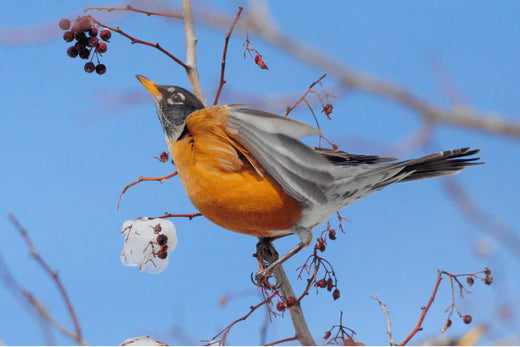
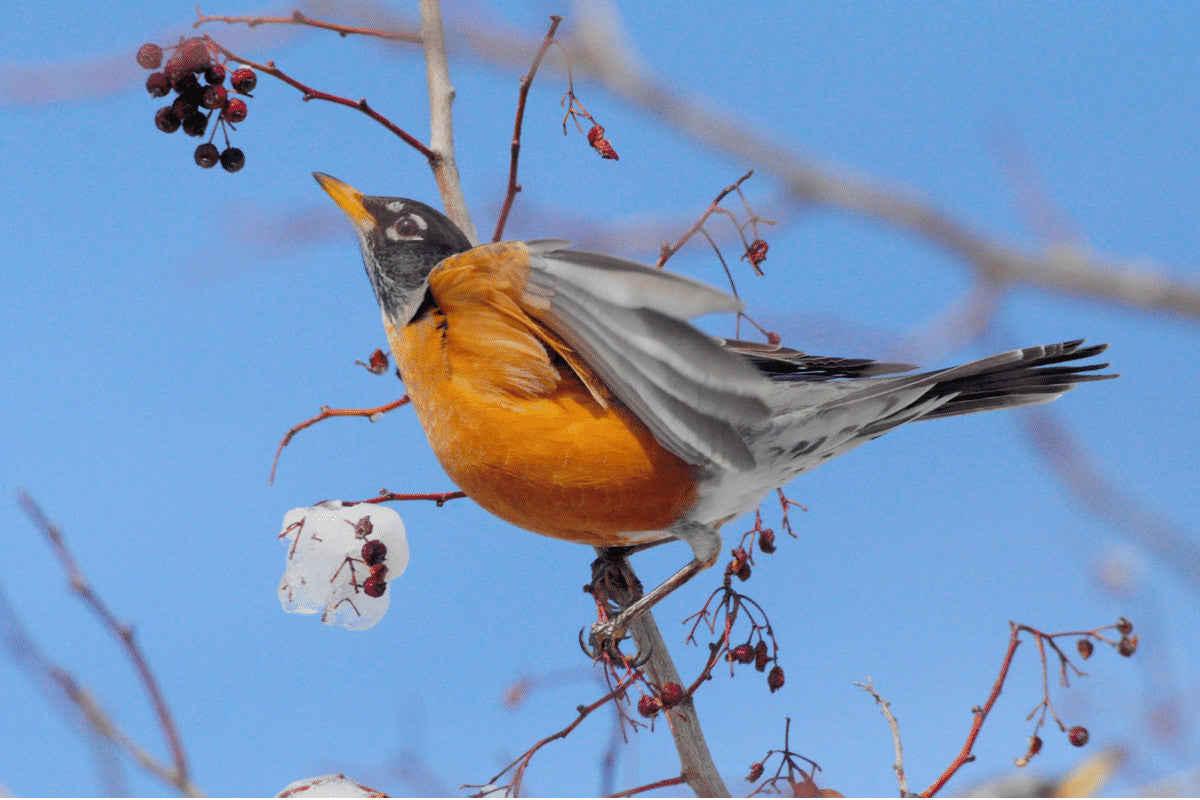

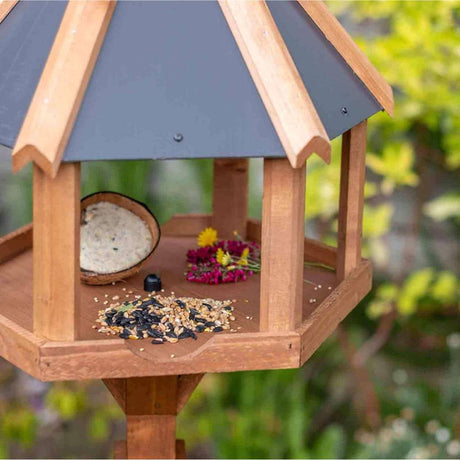

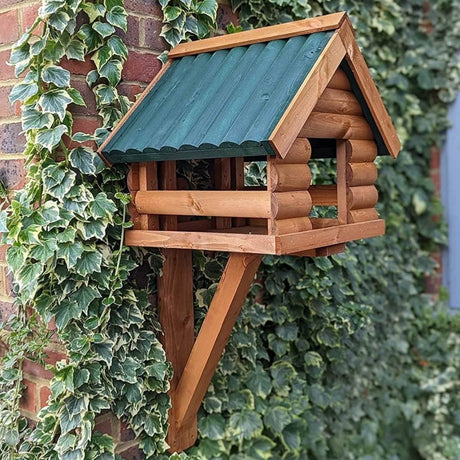
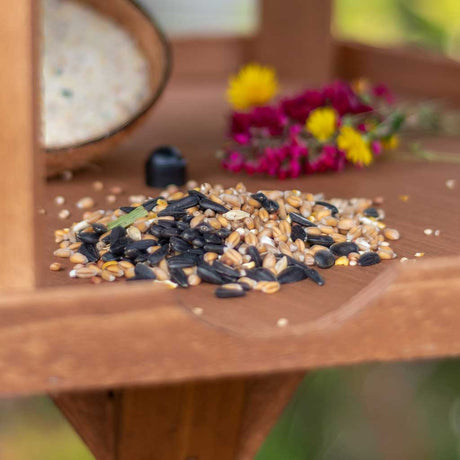
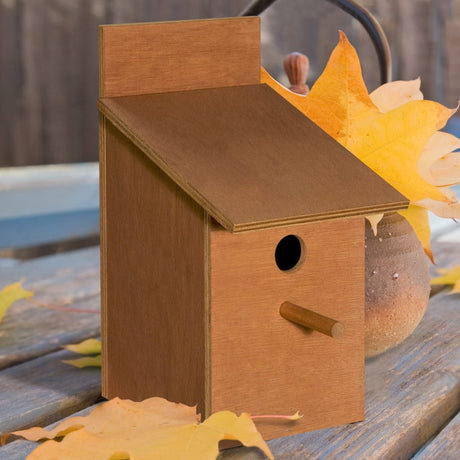

7 comments
What an amazing web page with brief but essential information. Well done for passing on your education freely for everyone around the world to learn quickly and vastly. It’s in easy read format which means most people can understand it. I took screenshot, I hope you don’t mind. Thank you very much for helping me find stubs and trees that feed birds during the winter period. Such a blessing. May your knowledge live on and benefit all.
Hi.
I like the article it’s very informative and has given me some idea of what I need to do now. I have a question?
I’m thinking of buying some bushes/trees that yield lots of berries for my garden, and have been told that Rowan berries are one of the birds favourite. Can you confirm this please before I buy.
Thanks for your article on which birds and animals like pyrocanthus etc… Will buy these for the garden in preference to alternatives. Just seen blackbirds eating the red pyrocanthus berries we planted this year. Only started eating them when the snow came.
Very helpful article and has given me my first steps to creating a wildlife friendly garden
I wish this article was a bit more helpful. . Without giving the Latin name of the appropriate plant I am none the wiser – There are dozens of berberis, deciduous and evergreen. Which one has the berries pictured? Same with dogwood and cotoneaster. Which ones are most useful to birds?
Very useful article, thank you. I want to get rid of a tall, fast growing, ugly tree, but worried that the birds seem to like it. Now I can change it for something they’ll like even more, that will look lovely and be easier to keep under control.
I loved the article about best shrubs with berries for birds. I’m not a gardener (yet!) but love all of our birds. I have 80yds of perimeters to parts of the garden of the house that I have been in for two years and want to put in hedging. Looking at different gardening websites has left me with a dilemma and some confusion. This article has put my mind at rest and I now know exactly what I am going to buy in the next week to hedge my garden. Thank you so much.
On another subject on which you write I have wondered lately why I am getting less visitors to my bird feeders. I thought as the weather got colder and days draw in I would get more birds not less. Now I understand much better. I have always known that nature itself can provide more food for our feathered friends in Autumn but did not realize that they might hide away while they moult and re-feather. Thanks for that as well. Great site.